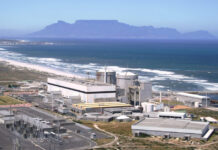Statistics South Africa published its latest Quarterly Labour Force Survey (QLFS) this week, showing that the country’s unemployment rate increased to a record-high of 34.9% in the third quarter of 2021. The expanded unemployment rate increased by 2.2 percentage points to 46.6% over the same period.
While the country’s labour market is likely to see a recovery in the coming months and years, analysts at financial services group Momentum noted that the return of occupations would not necessarily be equal.
“Unfortunately, the jobs recovery lost a bit of steam in 2021 as a further 82,000 jobs were lost in the first half of 2021 compared to Q4 2020,” the group said.
An analysis by occupation shows that most job recoveries and creation occurred for:
- Managers
- Professionals
- Technicians
Meanwhile, job losses continued in semi- and low-skilled occupations such as:
- Sales
- Clerical jobs
- Craft jobs
- Plant and machine operators
This is reflected in the latest QLFS report for Q3 2021, which shows that the most significant decline in jobs was reported in the trade sector (-309,000), followed by community and social services (-210,000), construction and private households (-65,000 each). By comparison, the financial sector reported was the only sector to show an increase of 138,000 jobs quarter on quarter.
 Things are broadly more optimistic when looking at 2021’s GDP growth, with Momentum noting that economic growth of more than 5% is still possible in 2021.
Things are broadly more optimistic when looking at 2021’s GDP growth, with Momentum noting that economic growth of more than 5% is still possible in 2021.
“Should this happen, the size of the economy will be back at 2017 levels, having contracted to 2013 levels in 2020,” it said. “Chances are good that the economy may surpass its pre-Covid-19 size in 2022.”
Momentum said that South Africa’s economic performance would likely be weaker in the second half of 2021 compared to the first part of the year, in part due to the magnitude of the riots and looting which happened in Kwazulu-Natal and Gauteng in July 2021, as well as electricity shortages.
A disconnect
Analysts at professional services firm PwC have warned that while South Africa’s GDP rate may continue to grow, it will not necessarily directly correlate to an increase in jobs as it once did.
By applying simple regression modelling using the latest rebased GDP and employment data, the firm found that since Q4 2019, there has been a diminishing relationship between real GDP growth and job creation in the country.
“By the end of 2019, every one percentage point increase in real GDP would translate to a 1.01 percentage point increase in employment. In addition, real GDP change during a specific quarter would explain 74% of the change,” it said.
“When extending the regression period to Q2 2021, we observe that a one percentage point increase in real GDP now only translates to a 0.91 percentage point change in job creation.”
The calculation also has a reduced model fit of 0.67 – this means that, at present, the change in real GDP can only explain two-thirds of the change in jobs, PwC said.
While this relationship is clearly diminishing, applying the updated model would still suggest that South Africa should add 410,000 jobs this year if the economy grows by the projected 3%, the firm said.















